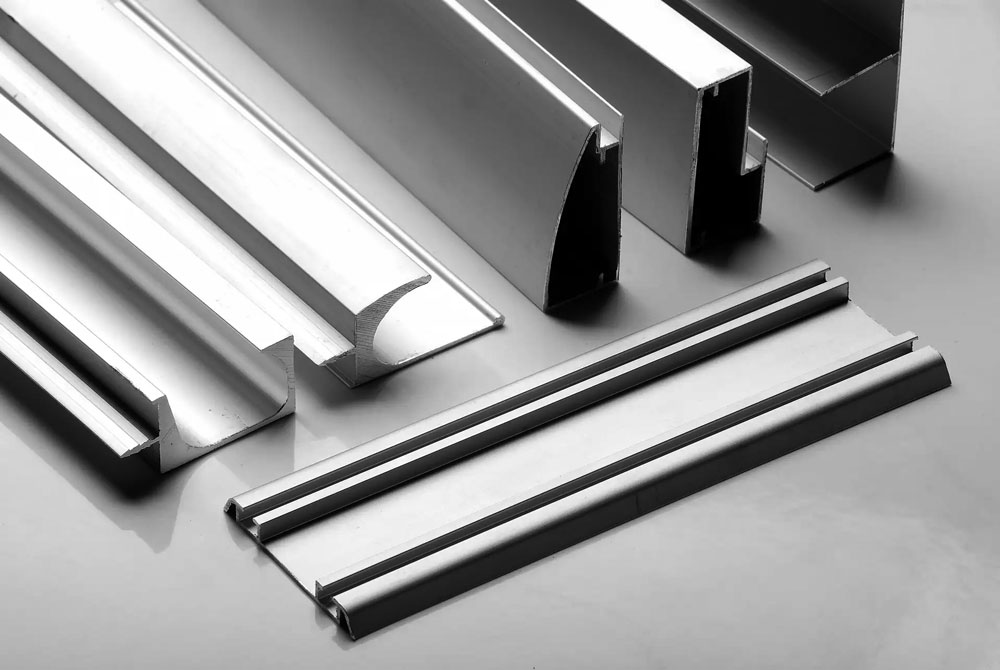The world without ALUMINIUM
Aluminium, which began to be commercially produced in 1886, is the second most widely used metal globally. The amount of aluminium at our disposal makes it no surprise that the metal finds its use in so many varying aspects of our everyday life. Aluminium's universal appeal is its odourless, malleable, conductive, and corrosion-resistant qualities that

Aluminium, which began to be commercially produced in 1886, is the second most widely used metal globally. The amount of aluminium at our disposal makes it no surprise that the metal finds its use in so many varying aspects of our everyday life. Aluminium's universal appeal is its odourless, malleable, conductive, and corrosion-resistant qualities that make it an intrinsic metal. It is so vital to modern mobility, environmental sustainability and the economy that without it, many of the conveniences of today's world would merely not exist.
Transportation, construction, consumer goods and packaging are sectors where the metal continues to make very practical items. Its lightweight and sturdy properties are qualities why aluminium continues to be used vastly, even in intricate industrial uses. Aluminium today is not just the fastest growing metal but a versatile product whose positive efficiency, safety and durability are noteworthy. It helps the metal in catering to present-day requirements and complex engineering demands.
Consumption & demand
Though low in comparison to a world average of 11 kg, India, with a per capita aluminium consumption of 2.5 kg, is continuing to show growth. With anticipated policy changes, the metal's consumption is only set to grow further. Globally, data indicates that the auto and transport sector are spearheading the consumption pattern with 23% of aluminium consumption, construction at 22%, packaging at 13%, electrical at 12%, machinery and equipment at 8.5% each. Aluminium in consumer durables is 4.5%, with other segments amounting to 4%.
The power sector is the biggest consumer of aluminium at 48% used in India's vast electric distribution system. The transportation and automotive sectors are at 15%, building and construction at 13%, and consumer durables contribute to 7% of aluminium consumption in the country. As the world turns green, with EV manufacturing being one of the critical measures, economic growth led by aluminium in this space is expected to increase rapidly.
The future is bright for the use of aluminium, with the Make-in-India initiative offering the most significant potential opportunity for its consumption to grow manifold. It has set the ball rolling with several government-backed mega-projects to see aluminium being used as a critical component. These include creating smart cities, ensuring housing for all, the rural electrification mission, dedicated freight corridors, high-speed railway lines, etc.
The often-asked question is why is aluminium so wanted? It is because aluminium is uniquely positioned to meet the needs and challenges of the 21st Century. The downstream aluminium industry has created capacities and capabilities to provide engineered aluminium products that meet the most detailed requirements of industries and are also a great fit in a circular economy. These are energy efficient and suited for extreme weather conditions. This lets it offer itself to different applications in almost every industry and finds a role in creating every other product in use today.
Intrinsic bond
Aluminium shares an intrinsic bond with the world we live in today. Its strength-to-weight ratio makes it particularly useful as a structural material weighing 65% less than steel. It leads the complexities of executing perfection in transportation, construction, consumer goods and packaging industries to a possibility. It may not be the strongest on its own, but aluminium draws incomparable strength when alloyed with other metals. We find it being used in cars, trains, and airplanes because it allows the vehicle to withstand impact. Aluminium's feather-light weight enables it to travel at increasingly higher speeds without adding much drag.
For the construction sector, its corrosion-resistance qualities let aluminium forego the need to apply any anti-corrosion coating, which is an added cost. But what makes this a developer's delight is that building fenestrations with aluminium are almost free of maintenance, and they have higher thermal efficiency and can be moulded into various desired shapes supporting modern design innovations. Some advanced countries are experimenting with photovoltaic devices and micro-wind turbines that can be integrated directly into the aluminium façade offering green buildings a new meaning.
The consumer goods sector has seen aluminium replace other materials like steel and plastic as it allows heat to dissipate at a much faster pace. New age gadgets and appliances like flat-screen TVs, smartphones and tablets have included aluminium over time, and its applications in various consumer products have let the devices work for hours without overheating.
Larger good
The use of aluminium alloys has revolutionised the world, especially through green initiatives. While we would perhaps have lived similar lives without aluminium, the world would have been less comforting. Less comforting concerning the use of a metal, whose applications and capabilities enriched by the downstream sector have added a host of modern conveniences to our lives. The world would not have achieved industrial development as quickly without aluminium.

- R K Jain
Senior Vice President - Corporate Affairs, Jindal Aluminium
Hits: 0







